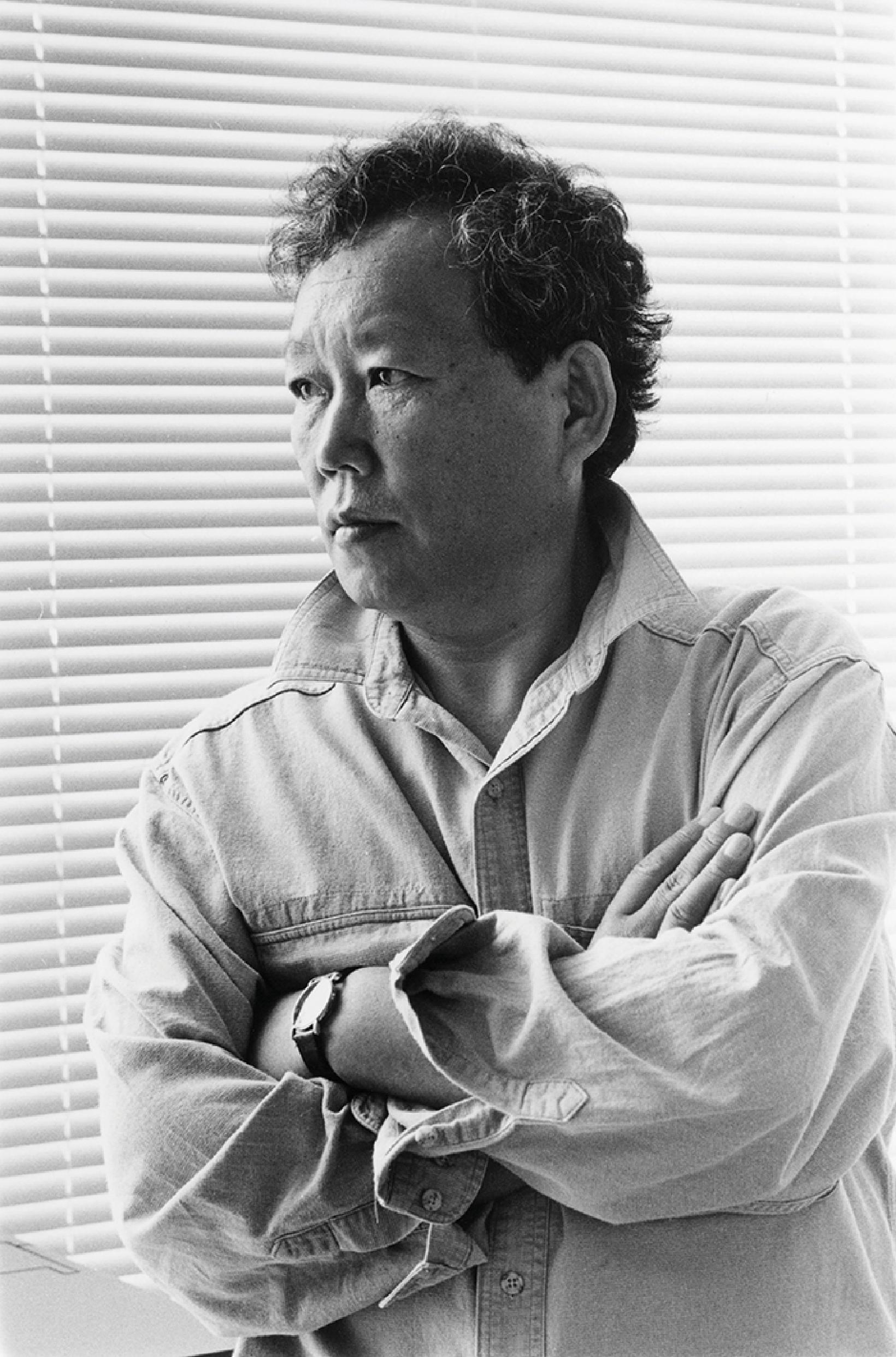Lee Seung Jio (1941-1990) pursued a strict world of geometric abstractionism which was almost unprecedented in the Korean scene of the 1970s and 1980s. He was one of the founders of the Origin Group in the early 1960s that responded to the turmoil of post war Korea with system based unemotional refined abstract practices in contrast that seen in the Informel movement. The artist is most known for his depiction of specific geometric forms often referred to as pipes which are, in fact, exercises in the composition of bars. Spanning vertically or horizontally, the bars are formed by spraying pigment in varying gradations. The pigment is darkest at the top of the bar and fades as it reaches the bottom, creating the illusion of a cylinder.
Lee’s compositions varied in focus with some emphasizing the metallic nature, or others alternating the cylinders or playing with order. The effect is very cold, but tight and densely structured with the works being expressions of Lee’s confident method that was honed over his singular dedication to the evolution of this process driven practice centered on the form. Many people today recognize Lee’s career work for his steadfast, even stubborn, adherence to the same path. His reputation stands out all the more for his consistency in the face of extreme shifts and vicissitudes. In this way, his relatively short career proved a shining example of logic and perseverance in a Korean contemporary art world that was relatively nascent and lacked tradition.
Lee’s work will be showcased in a major retrospective at the National Museum of Modern and Contemporary Art Korea (MMCA). His works are in the collection of the MMCA, Ho-Am Museum of Art, Seoul Museum of Art. Lee’s works are in the collections of the National Museum of Modern and Contemporary Art, Gwacheon, Ho-Am Art Museum (Samsung Museum of Art) Yongin, Seoul Museum of Art, Deutsche Bank Collection, and the Hong-Ik University Museum.
이승조(1941-1990)는 한국미술계에서는 보기 드문 엄격한 기하학적 추상의 세계를 추구한 화가이다. 그는 당시 한국화단의 주된 흐름이었던 단색화 운동을 서구의 기하학적 추상, 옵아트 등과 조화시키면서 독자적인 ‘파이프’ 형태를 연상시키는 ‘핵(Nucleus)’연작을 제시하였고, 동시대 추상미술의 새로운 흐름을 형성하였다. 그는 기하학적 추상이 빈약한 한국미술계에 최초로 기하학적 추상을 시도하여 정착시켰으며, 한국의 모더니즘 전개과정에 독보적인 자림 매김을 한 작가로 평가되고 있다.
이승조는 1941년 평안북도 용천에서 태어나 홍익대학교 회화과와 동 대학원을 졸업했다. 이승조는 기존의 경향에 반발하면서 기하학적 추상미술을 표방하고 새로운 실험정신을 외쳤던 신진 작가들이었던 ‘오리진’ 동인의 결성에 동참하였으며, 1969년 ‘한국아방가르드협회(A.G.)’의 활동 등을 통해 개념미술의 유입과 새로운 조형적 질서를 모색하는 진취적인 활동을 이어왔다. 당시의 반국전 작가들과는 달리 1968년부터 1971년까지 국전에도 출품하여 연속 4회의 수상경력을 취하면서 국전 내부의 새로운 흐름을 만드는데 일조하기도 했다. 1977년부터 중앙대학교에 강사로 활동했던 이승조는 1981년에서 1988년 까지 조교수로 재임하면서 후진양성에 힘썼다.
